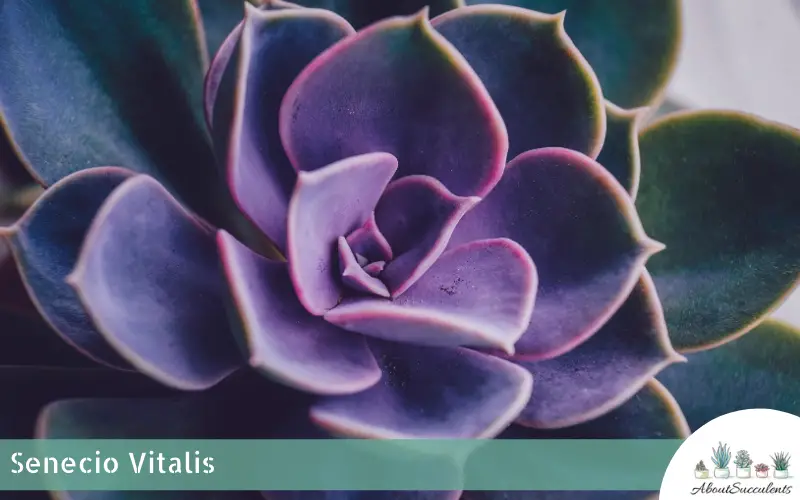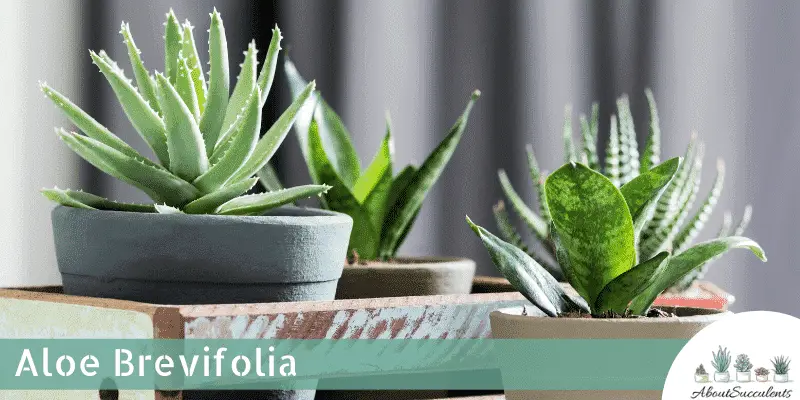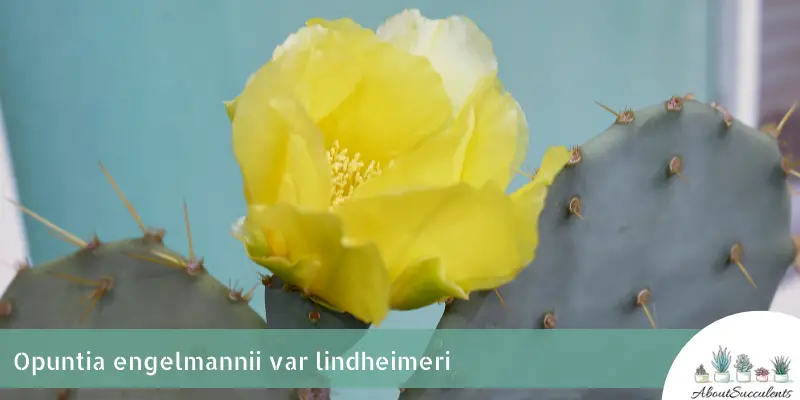Succulents are every horticulturist’s dream because not only can these desirable plants brighten any outdoor garden and indoor living space but they’re durable and easy to grow and care for. And if you think succulents are beautiful enough as they are, wait until they make flowers.
Yes – these lovelies will surprise you with attractive flowers that appear in different colors, shapes, and sizes. Some flowers even emit a mild, pleasant scent while others produce edible fruit!
In this article, we’ll present our choices for the best succulents that make flowers. These succulents will bloom whether they’re grown indoors or outdoors. Before we go to our list, there’s a key component that’s needed to ensure your charming plants bloom on time.
Succulents Need Sunlight To Produce Flowers
Although most varieties of succulents grew in dry and humid conditions with regular exposure to bright light, they can also grow indoors. However, to help the succulent bloom, you have to make sure your plant gets its regular dose of the sun’s rays.
Succulent plants will do well whether they’re exposed to partial or full sun. There are succulents that will prefer full sunlight in order to achieve the maximum spectrum of colors.
If these succulents are what you prefer, you can create a sunny environment for them simply by placing the plants under a Grow Light for up to 6 hours per day.
As for water, do the opposite. Unlike sunlight, succulents don’t need much water. In fact, watering these plants frequently or while there’s moisture in the soil will do more harm than good.
One reason why succulents have thrived in the desert and tropical regions is that their leaves and stems store a lot of water. Keeping the roots immersed in a moist environment can cause them to rot.
Best Succulents That Make Flowers
Now that you know the golden rule – more sunlight and less water – let’s find out the best succulents you can grow that produce beautiful flowers.
1. Kalanchoe Blossfeldiana
Kalanchoe blossfeldiana is also known as ‘Christmas Plant’ because just like the Yuletide holidays, this colorful and captivating succulent brings a lot of warmth and good cheer to any space 365 days a year.
Another nickname for Christmas Plant is ‘Florist Kalanchoe’ because it makes pretty clusters of tiny flowers in a range of colors – pink, magenta, red, white, and orange.
Florist Kalanchoe produces flowers on days that are colder and shorter. So, yes, true to its alias, Christmas Plant will gift you with flowers during the winter season – maybe even on Christmas Day!The best part is that the colorful cluster of cheerful flowers will last a long time.
2. Echeveria ‘Perle von Numberg’

‘Breathtaking’ is one word that florists will use to describe Echeveria ‘Perle von Numberg’. The leaves are flat, and wide, and have a pastel purple color with bright pink margins that form a single rosette.
Look closely at the leaves and you’ll notice white-colored, dust-like particles on its surface. All of these elements help turn Perle von Numberg into a mesmerizing beauty. No wonder this succulent was cited with the prestigious Award of Garden Merit by the Royal Horticultural Society.
Perhaps the most interesting characteristic of Echeveria is that it produces 5 to 6 flowering stems every year. These stems can bloom small, coral-colored, bell-shaped flowers with yellow interiors in the summer or early spring.
3. Aloe Brevifolia

Aloe brevifolia captivates onlookers with its colors and unusual appearance. Short-leaf Aloe’s leaves start out light blue and then turn pink and bright yellow when exposed to full light.
The leaves are thick, fleshy, and have a triangular shape. Its edges are lined with white spines that give the illusion of jagged teeth. Short-leaf Aloe can reach a maximum height of 2 feet (60cm) and spread about the same.
In the springtime, Aloe brevifolia will produce bright orange-colored flowers that have a tubular shape above the foliage. These beautiful flowers will surely add more color and pop to your garden.
4. Opuntia Engelmannii var. Lindheimeri

Opuntia engelmannii var lindheirmeri is a bushy succulent that fascinates with its ping-pong paddle-shaped, thick, and fleshy leaves that grow to a length of 12 inches (30 cm).
The leaves have a bluish-green color and are covered by short, prickly spines that are 1 inch (2.54 cm) long and vary in color from dull yellow, white, brown, or tan. From spring to summer, you’ll see several clusters of enchanting orange and yellow flowers growing along the edges of the leaves.
Engelmannii Prickly Pear will also reward you with juicy, red fruits that measure 2 inches (5 cm) long. These fruits are edible and are commonly used to make jams, candy, syrups, and jellies.
5. Echinopsis Oxygona
Echinopsis oxygona or Easter Lily Cactus is a succulent that’s popularly used in garden beds or as a border because it grows fast and forms clusters that can spread as far out as 2 feet (60 cm).
Easter Lily Cactus has a globular shape and features cylindrical stems that have ribs. The stems are colored green, can reach a height of 1 foot (30 cm), and are covered with short, dark-colored spines.
Horticulturists love Echinopsis oxygona for its large, long, and white or pink-colored flowers that appear from late spring and throughout summer. The flowers have a funnel shape and emit a mild, pleasant scent.
The flowers often come out in the late afternoon and some might wither the following day. However, Easter Lily Cactus will bear large, green-colored fruits.
Echinopsis oxygona is a recipient of the Award of Garden Merit from the Royal Horticultural Society.
6. Sempervivum Hedgehog
Sempervivum hedgehog only grows to a maximum height of 3 inches (7.62 cm) and 6 inches wide (15.24 cm). But what it lacks in size, the succulent more than makes up for in beauty.
The arrow-shaped leaves of hedgehog are colored lime green in the middle and as it spreads out, the colors become dark red. Sempervivum’s leaves will form a tight and symmetrical rosette
In the springtime, hedgehog will bloom enthralling red and orange flowers. This is a monocarpic succulent and will die after it produces flowers. However, upon maturity, the succulent will produce offsets on top of the plant.
These offsets will naturally break off and roll to the ground. You can use these offsets to propagate the species.
7. Pachyphytum Oviferum
Pachyphytum oviferum is also known as ‘Pink Moonstone’ but you can also call it adorable. This clump-forming succulent is easily recognizable by its short, stumpy, and oval-shaped leaves that could appear with a bluish-purpose to a bluish-green color.
However, there are times when the leaves might come out to have a pinkish or peach color. You’ll notice that the leaves have a waxy texture. The purpose of this wax-like substance is to protect Pink Moonstone from the sun’s scorching rays.
Pink Moonstone or Sugar Almond Plant will produce bell-shaped flowers on top of 12-inch (30 cm) stalks in the early winter to early spring. The petals of these flowers are cream-colored and are accented with a dark purplish-red spot with greenish-white sepals.
Conclusión:
Given their varied colors and shapes, it’s no surprise that succulents are beautiful plants. What often surprises first-time horticulturists is that there are many types of succulents that bloom flowers.
You can help your succulent produce flowers with proper care. As long as the plant gets 6 hours of partial to full sunlight every day and the soil receives water between dry periods, your plant will reward you with beautiful blooms when the season is right.
Last Updated on diciembre 20, 2022 by Sofía Lara